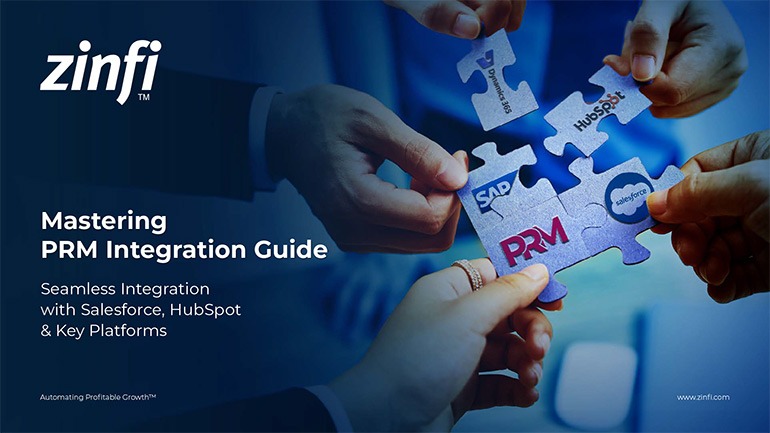Glossary - How to - Partner Network Strategy
How to Develop an Effective Partner Network Strategy?
Introduction
In today’s competitive business environment, companies rely on partner network strategies to scale their operations, expand their market reach, and drive revenue growth. A partner network strategy involves creating and managing relationships with various partners—distributors, resellers, service providers, and technology alliances—to build a collaborative ecosystem that delivers mutual benefits.
Effective partner network management is essential for businesses to leverage third-party organizations to boost sales, increase customer reach, and provide added value through complementary services and solutions. Partner Relationship Management (PRM) platforms streamline and automate these processes, making it easier to onboard partners, manage performance, and optimize partner engagements.
In this guide, we will explore the key components of a successful partner network strategy, the role of automation in managing partnerships, and industry-specific examples of how businesses can benefit from these collaborations.
Key Takeaways:
Define Your Partner Network Goals and Objectives:
A successful partner network strategy starts with well-defined objectives. Organizations must determine the purpose of their partner program and the outcomes they aim to achieve. Some common objectives include:
- Expanding into new geographical markets
- Increasing sales through channel partnerships
- Enhancing customer experience with complementary solutions
- Strengthening brand presence through co-marketing initiatives
Businesses to achieve these objectives must outline a clear partner program framework that includes eligibility criteria, performance metrics, and incentives for partners.
Identify and Segment Potential Partners:
Not all partners are the same. Businesses must segment their partners based on their capabilities, market reach, and strategic fit. Common partner types include:
- Resellers – Sell and distribute your products or services
- Distributors – Act as intermediaries between manufacturers and retailers
- Technology Alliances – Provide complementary solutions that integrate with your offering
- Managed Service Providers (MSPs) – Offer ongoing support and value-added services
Businesses can create customized engagement strategies that align with their unique needs by categorizing partners effectively.
Establish Clear Partner Onboarding and Training Programs:
A streamlined partner onboarding process ensures new partners quickly understand how to market and sell your products, involving:
- Providing a dedicated partner portal with training materials
- Offering certifications and role-based learning paths
- Defining precise engagement models and communication channels
PRM platforms are crucial in automating partner onboarding and ensuring partners receive the necessary tools and training to succeed.
Implement Performance Management and Incentive Structure:
Tracking and optimizing partner performance is key to a successful network strategy. Businesses should:
- Define clear Key Performance Indicators (KPIs) such as sales volume, customer retention, and deal registration rates
- Offer incentive programs like rebates, commissions, and tier-based rewards
- Use partner scorecards and dashboards to monitor real-time performance
Automation tools within PRM platforms help streamline incentive management and performance tracking, enabling businesses to adjust strategies based on data-driven insights.
Leverage Technology for Partner Relationship Management:
Technology plays a pivotal role in managing complex partner networks. A robust PRM system allows businesses to:
- Automate deal registration and pipeline tracking
- Centralize partner communication and collaboration
- Provide real-time analytics on partner performance
By leveraging technology, businesses can scale their partner network efficiently while ensuring consistency in engagement and execution.
Summary of Key Takeaways:
Developing a strong partner network strategy requires a structured approach, including:
- Defining clear objectives to align partner efforts with business goals.
- Segmenting partners based on their roles and capabilities to tailor engagement models.
- Streamlining partner onboarding with training programs and PRM tools for efficiency.
- Implementing performance tracking and incentive structures to drive productivity.
- Leveraging PRM automation to enhance communication, deal management, and collaboration.
A well-planned partner network strategy ensures businesses can optimize their ecosystems for long-term growth and success.
Key Examples:
- Automotive Manufacturing: Manufacturers depend on partner networks to distribute vehicles, parts, and aftermarket services. A structured partner network strategy ensures seamless coordination between manufacturers, dealerships, and service centers to enhance customer experience and drive sales.
- Consumer Electronics: In the electronics industry, businesses collaborate with retailers, distributors, and resellers to reach consumers efficiently. A strong partner network strategy ensures products are marketed and serviced effectively across different sales channels.
- Energy Production: Energy companies partner with technology providers, infrastructure developers, and service firms to implement sustainable solutions. A well-defined strategy ensures seamless collaboration for large-scale projects and regulatory compliance.
- Financial Services: Banks and financial institutions work with fintech partners, payment processors, and consulting firms to enhance their service offerings. A PRM-driven partner strategy enables streamlined digital transformation and regulatory adherence.
- Food and Beverage: Food manufacturers and distributors collaborate with grocery chains, restaurants, and online platforms. A partner ecosystem enhances supply chain efficiency and ensures product availability across retail touchpoints.
- Healthcare Services: Healthcare providers partner with pharmaceutical companies, insurance firms, and technology vendors to enhance patient care and optimize operations. A well-structured partner strategy ensures compliance with industry regulations and improved service delivery.
- Information Technology: IT firms rely on channel partners, managed service providers (MSPs), and cloud vendors to expand their software and hardware solutions. A PRM system helps streamline channel sales, lead sharing, and performance tracking.
- Pharmaceutical Development: Pharmaceutical firms work with research institutions, contract manufacturers, and healthcare providers to bring new drugs to market. A robust partner network strategy ensures efficient collaboration in drug development and distribution.
- Retail Industry: Retailers partner with logistics providers, payment gateways, and technology firms to enhance customer experiences. E-commerce integrations and loyalty partnerships are critical in driving sales and customer retention.
- Telecommunications: Telecom companies collaborate with service providers, infrastructure vendors, and software developers to deliver connectivity solutions. A PRM platform enables efficient partner engagement and network expansion.
Conclusion:
A well-executed partner network strategy is essential for businesses aiming to scale operations, enter new markets, and enhance customer experiences. By defining clear objectives, segmenting partners effectively, streamlining onboarding, implementing performance management systems, and leveraging PRM automation, businesses can optimize their partner ecosystems for long-term success.
As industries evolve, companies that invest in partner relationship management will be well-positioned to drive growth and innovation through strategic collaborations.
Associated Keywords:
- Partner Ecosystem Management
- Channel Partner Strategy
- PRM Automation Solutions















